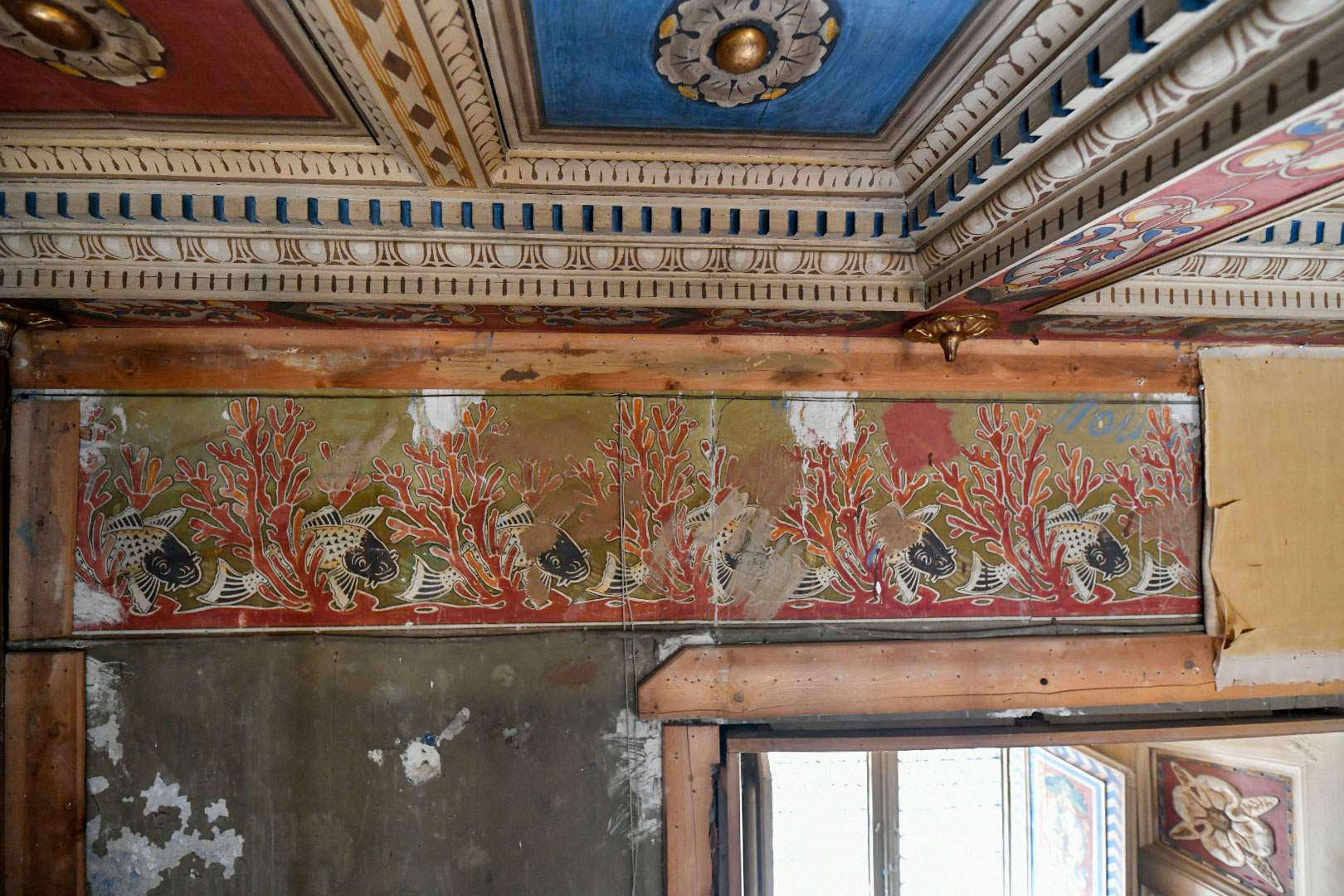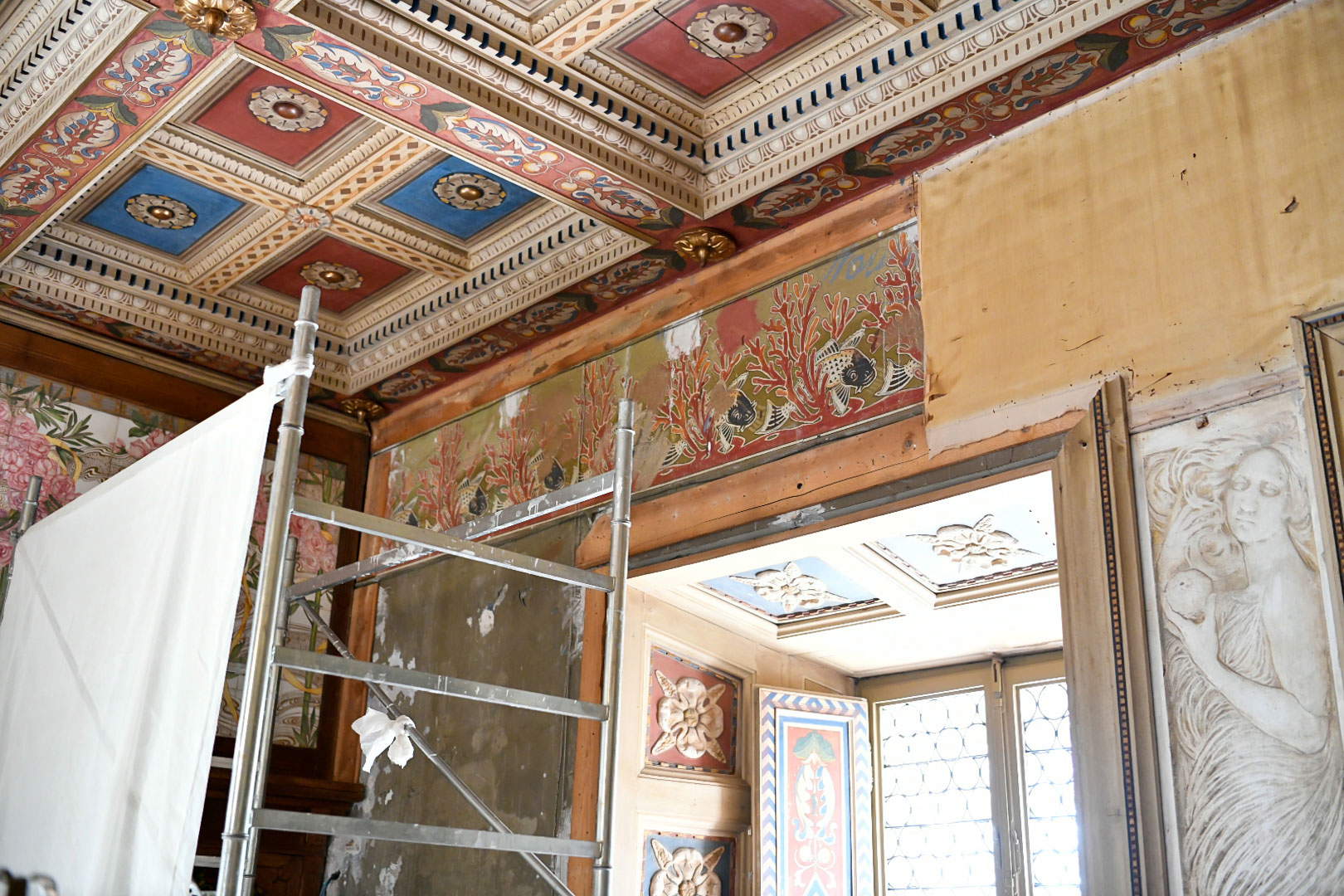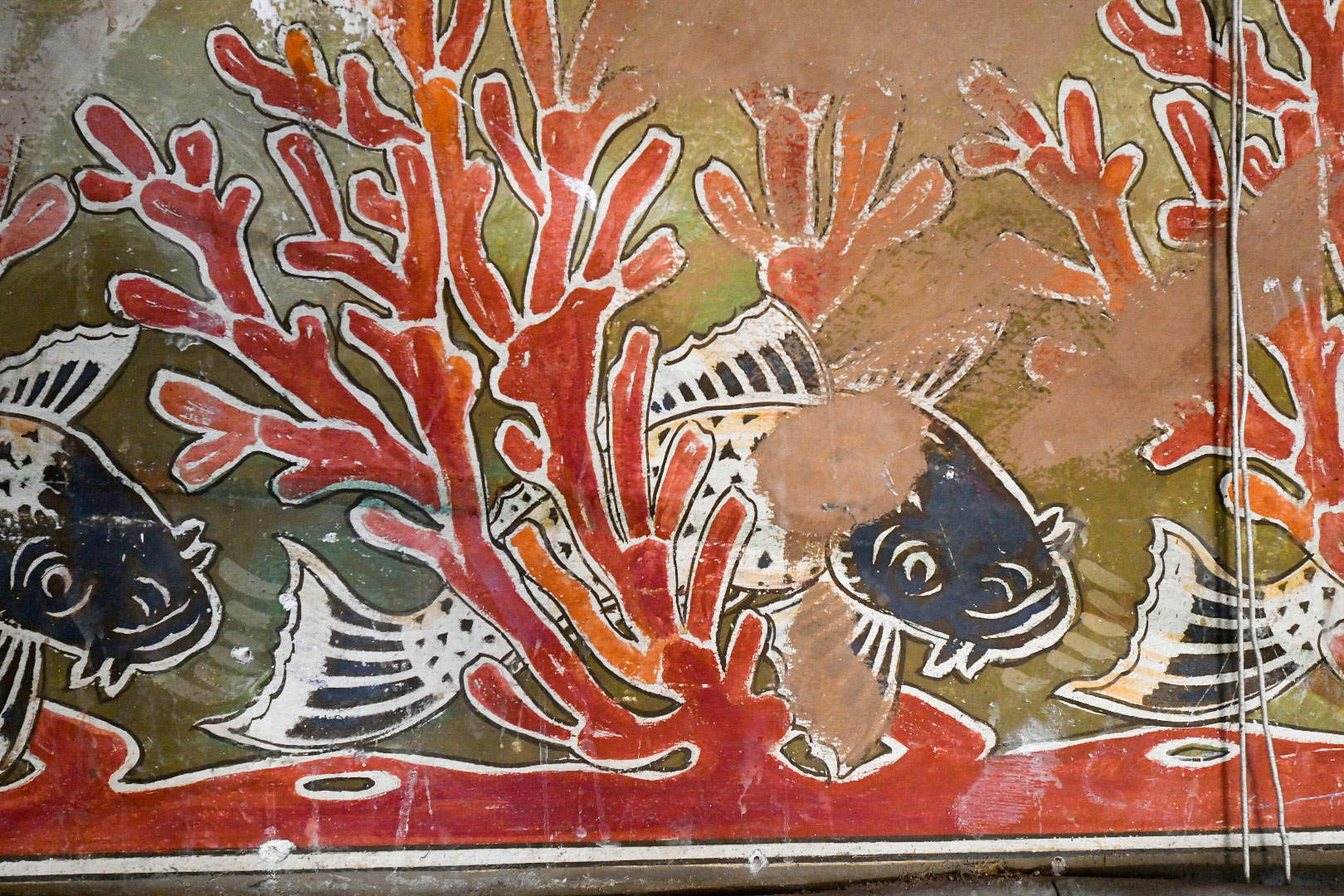A splendid discovery has been made at the Villa Museo Giacomo Puccini in Torre del Lago, the beloved residence of the great composer Giacomo Puccini (Lucca, 1858 - Brussels, 1924): during restoration work that has been affecting several rooms of the home for years, a cycle of tempera decorations, until now hidden by the silk covering the walls of the room, on the ground floor, called by Puccini himself Omnibus, where he composed and received friends, has emerged. It was a totally unexpected find that excited the entire team on site and the staff of the Simonetta Puccini Foundation.
The decorations are found in the band between the coffered ceiling and the windows and it is assumed, at least from this initial find, that they run on all sides of the room. Repeating marine subjects are depicted there: on the olive-green background, bright brick-red colored corals and carp with white dotted bodies and dark snouts stand out. A painting that reflects Puccini’s taste for Japan-related themes and is reminiscent of subjects treated by his friend Galileo Chini (Florence, 1873 - 1956) and which we can see on some of his vases or ceramics.
We know that Puccini was personally involved in making the Villa with the collaboration of both Galileo Chini and Plinio Nomellini, along with architects Luigi De Servi and Giuseppe Puccinelli. Nomellini had painted whole figures on the walls, but papers in the archives tell us that they were unfortunately wasted due to moisture. The Villa we see today, in fact, was built on a pre-existing watchtower that had its bases a few meters from the water of the lake. Puccini fell in love with it, bought it from the gamekeeper who lived there at the time and completely transformed it. To get it away from the water he bought a piece of land from the Ginori family and adapted it as a garden, but humidity was always a problem.
It was known that Nomellini’s figures, blackened and disfigured by moisture, had been covered with cloth, so it was thought that there was nothing left underneath. So it was really a great surprise to find these decorated bands during the dismantling of the silks for their restoration. The decorations that popped up behind the fabric panels, were presumably between 1905 and 1910, subsequent to Nomellini’s: evidence of this was found in some photos of the time kept in the Puccini archives. During the period of fabric restoration, the decorations will be the subject of study and documentation, but in the meantime they will be extraordinarily visible to the public visiting the villa throughout the summer.
Transformed into a museum in 1925 at the behest of her son Antonio, after a long inheritance, the house passed into the hands of Simonetta Puccini, who has always kept it open. The rooms of the early twentieth century, still preserve the Förster piano, the screen, a precious gift from Japan, the paintings of the Macchiaioli friends, companions of life and hunting: everything introduces the visitor to that atmosphere so dear to the composer, who was buried here in 1926, in the chapel carved out of a parlor and decorated with allegories of music.
 |
| The uncovered decorations |
 |
| The uncovered decorations |
 |
| The uncovered decorations |
 |
| Splendid discovery at Villa Puccini in Torre del Lago: decorative cycle resurfaces |
Warning: the translation into English of the original Italian article was created using automatic tools. We undertake to review all articles, but we do not guarantee the total absence of inaccuracies in the translation due to the program. You can find the original by clicking on the ITA button. If you find any mistake,please contact us.